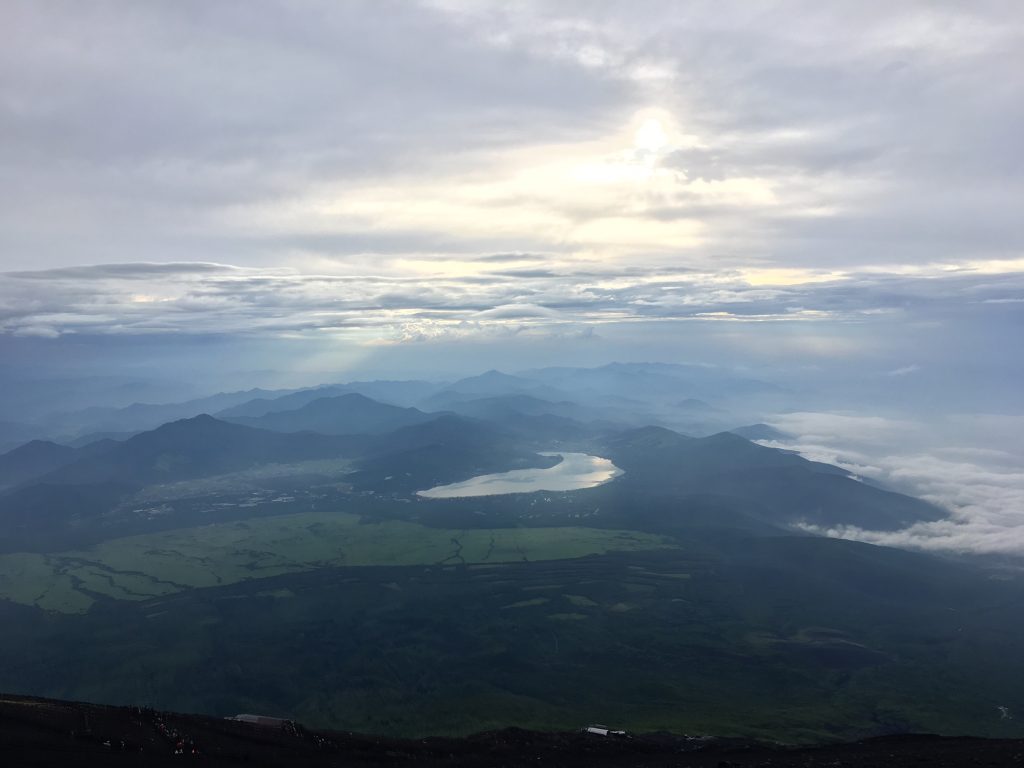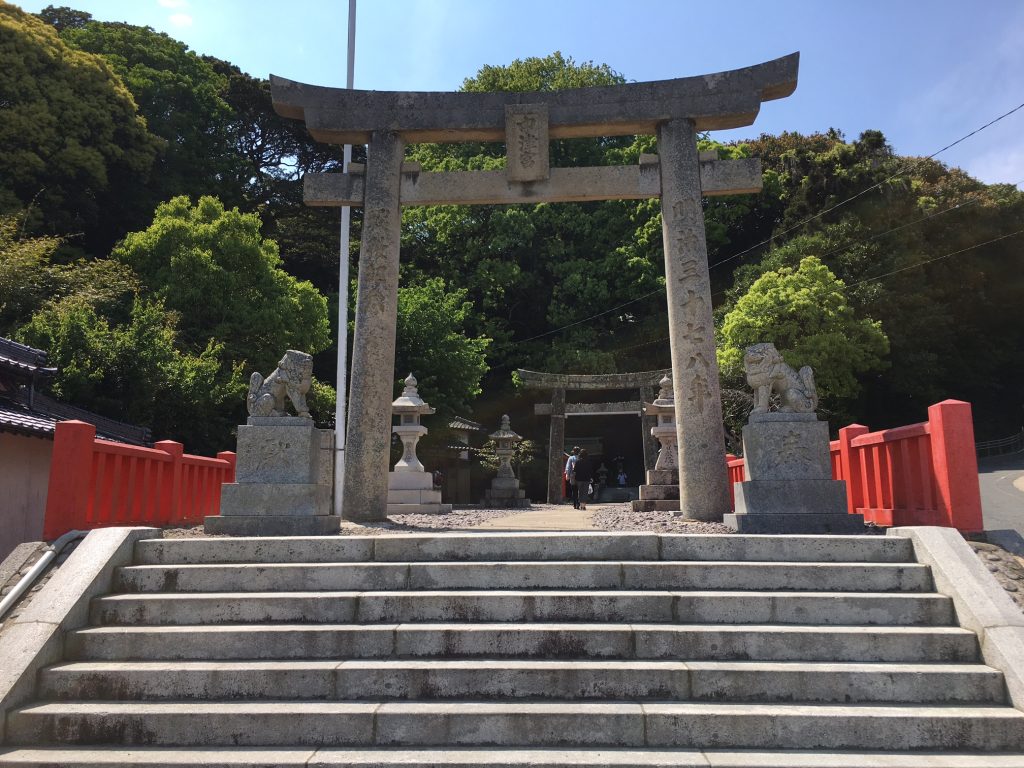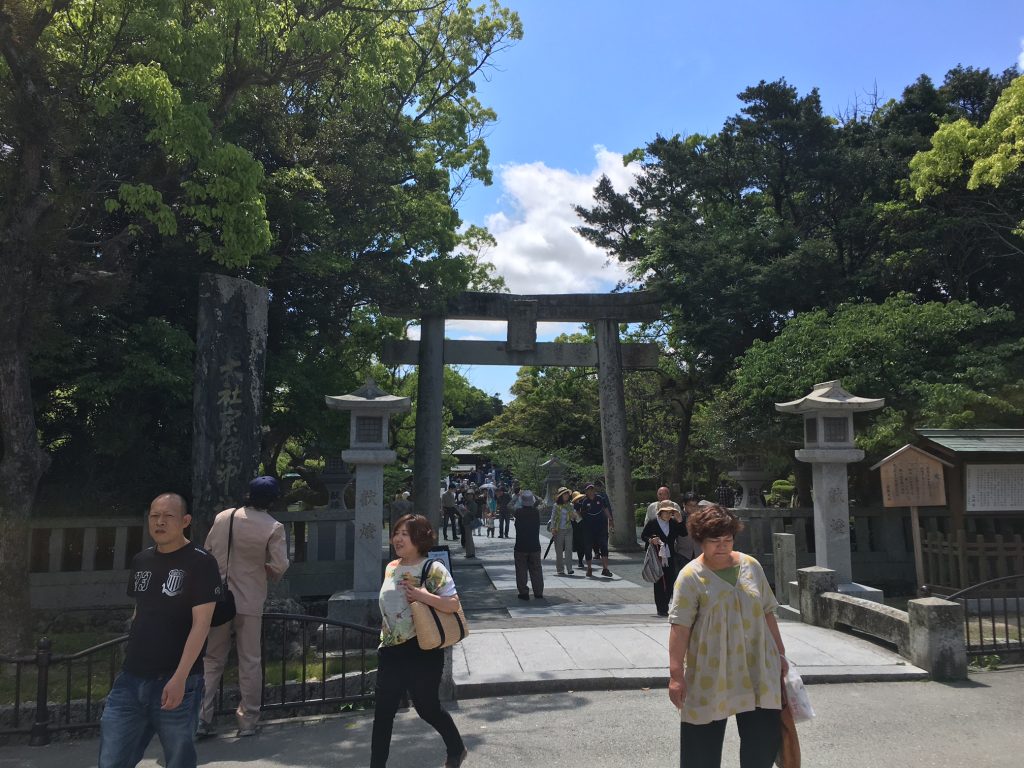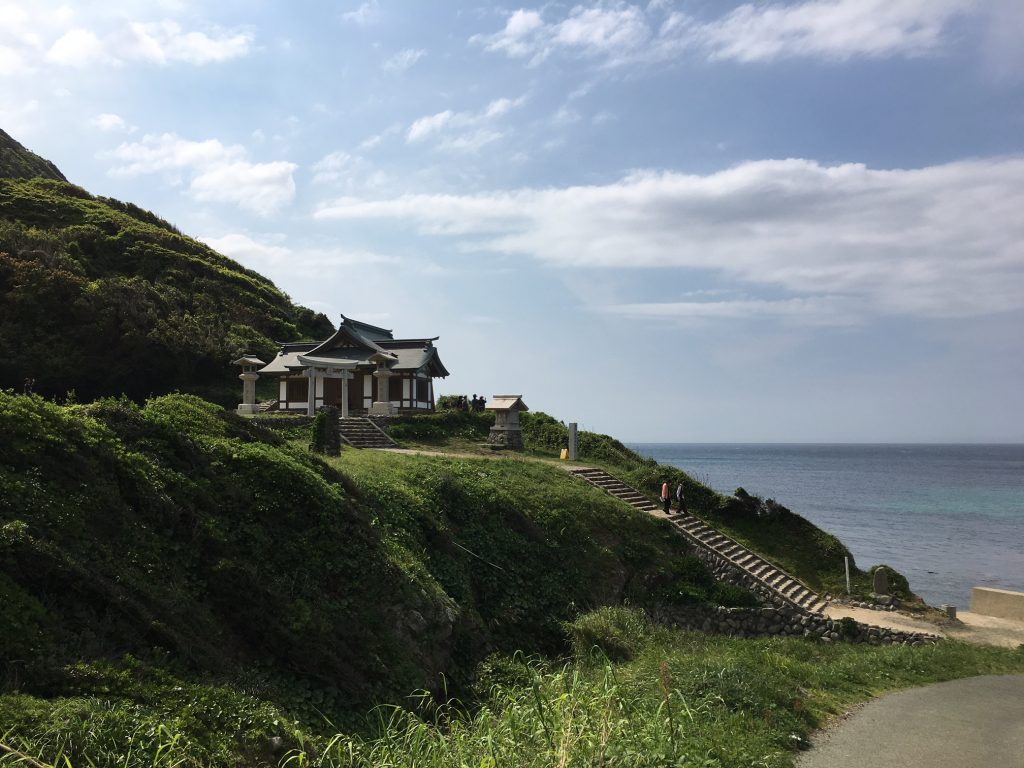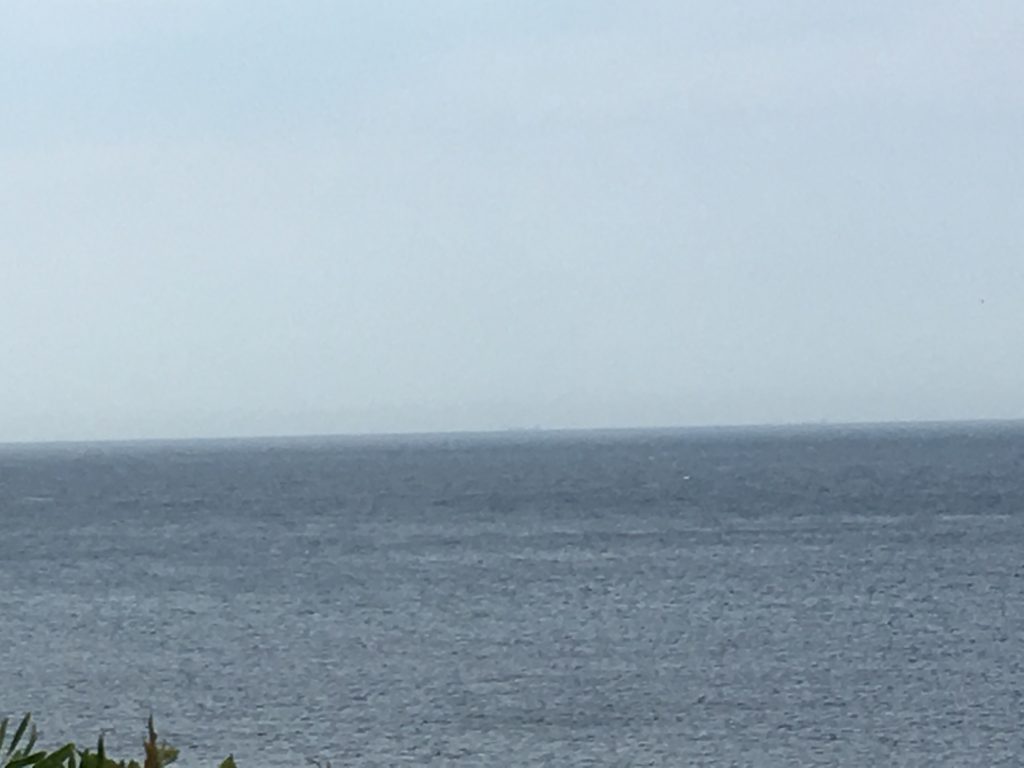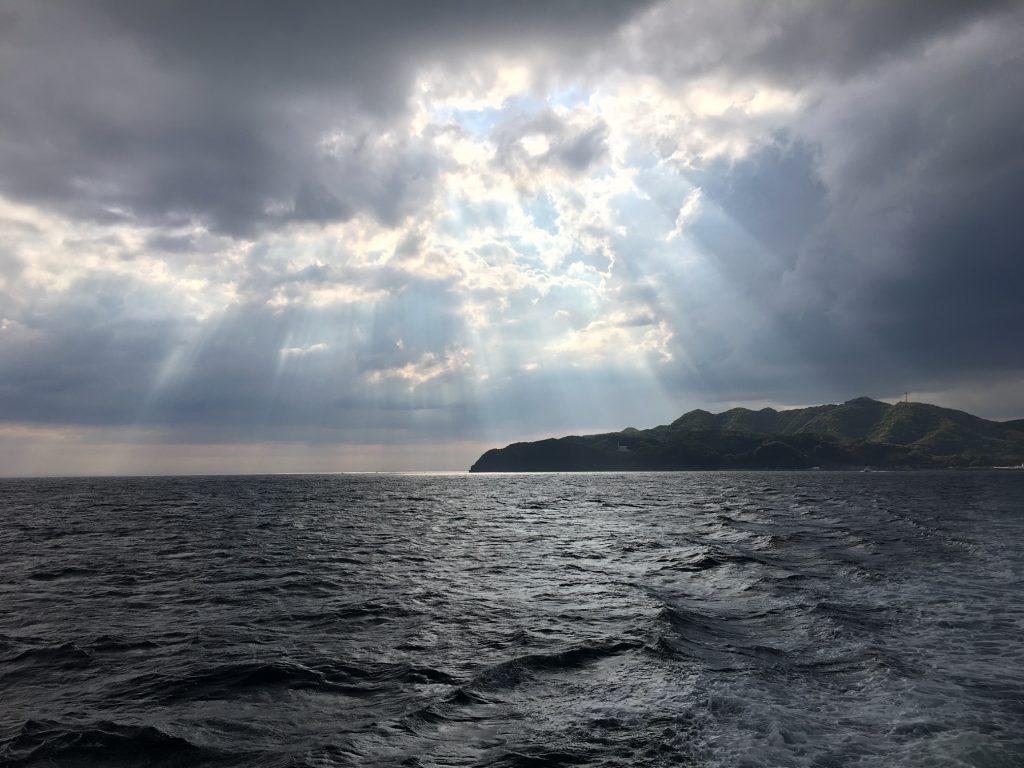If someone asks me to recommend some mountains in Japan for climbing, I might recommend some mountains in Japanese Northern Alps or South Alps where you can enjoy beautiful and various geographical features from peaceful streams with flowers to steep rocky peaks.
However, it doesn’t mean that I don’t recommend to climb Mt. Fuji. It’s different from climbing other mountains in Japan, it’s a unique experience to climb Mt. Fuji.
First of all, time to climb is different. Most climbers of Mt. Fuji start their climbing from 5th stations of either of 4 climbing trails. The altitudes of the 5th stations are different in each trail from the highest of 2,400 meters of Fujinomiya trail to the lowest of 1,450 meters of Gotemba trail. This time we chose Fujinomiya trail. (The photo below is the 5th station of Fujinomiya trail covered with fog.)
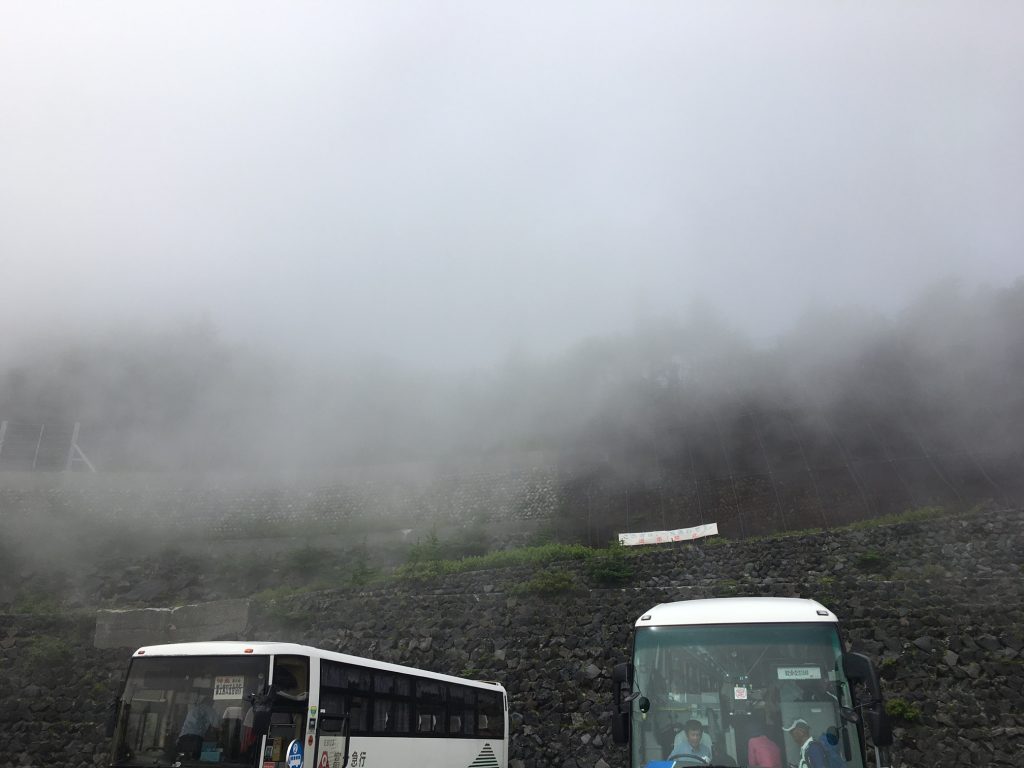
When I was a member of the alpine club of my high school, I learned that an important rule of climbing is to start early and rest early in order to avoid bad weather change. However, in case of Mt. Fuji we arrive at the trail head in the afternoon. And after taking short sleep in a mountain hut on the way, we restart climbing in the midnight !
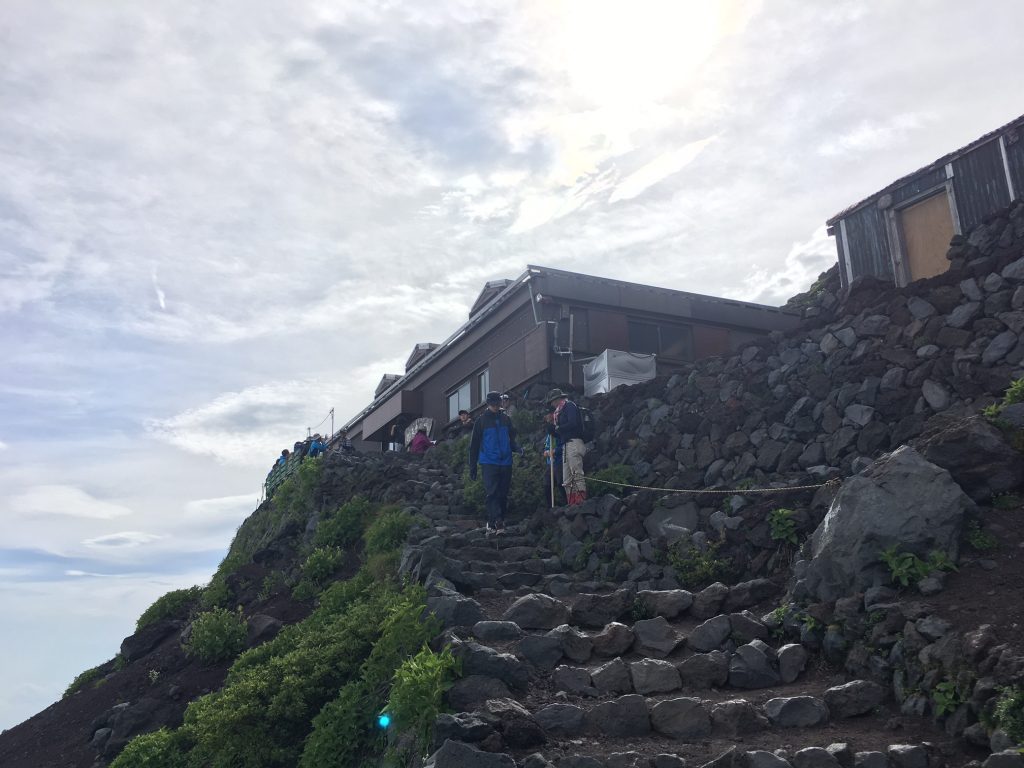
A main reason to climb at night is to see sunrise from the summit of the mountain. The sunrise seen from Mt. Fuji is called “Goraikou” in Japanese and has special (often spiritual) meanings for climbers.
However, the weather at the summit of Mt. Fuji is very unstable. From my experience I feel like that the possibility to see the sunrise would be 50:50. For example, this time, when we restarted climbing around 0 A.M., the sky was very clear and we could enjoy numerous stars. But after we passed the 8th station around 2 A.M, heavy rain and strong wind started hitting us. And even though we could arrive at the summit before sunrise, we could not see anything and just realized the sunrise when it became bright.
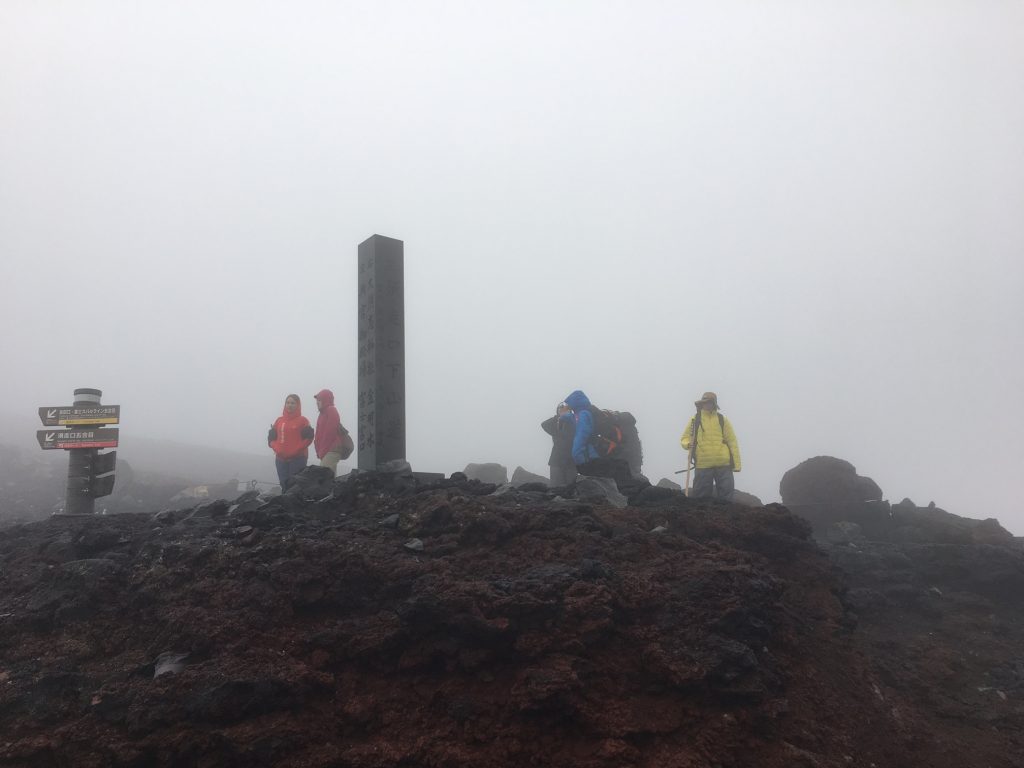
Nevertheless, I believe for most climbers it would be a special unique experience to climb Mt. Fuji even in case of bad weather. Unlike other mountains there are no ups and downs in Mt. Fuji. Once they start the climbing they just keep climbing up to the summit. Even if they realize that they cannot expect the good sunrise due to bad weather, the most of them don’t give up climbing up. They just keep climbing up resisting harsh rain and wind. Such experience would give some confidence on their lives after climbing.
Furthermore, as I wrote, the weather at Mt. Fuji is unstable. While we couldn’t see the sunrise, she showed us a wonderful view of Lake Yamanaka reflecting the morning sunshine which finally showed up from thick crowds.
